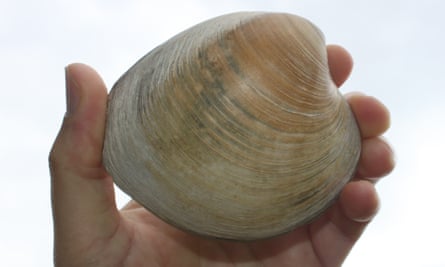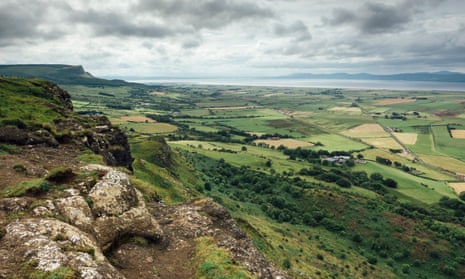The view from the top of the basalt outcrop of Windy Hill is sublime. Below, the flat expanse of Magilligan Point, County Derry, narrows into the distance as it almost reaches across the mouth of Lough Foyle to the heather-topped green hills and little white cottages of Donegal, six miles away.
Most of the sandy spit has been converted into grazed farmland, the field boundaries following the lines of ancient sand ridges deposited as the point has grown since the last ice age. A half-mile wide strip along the western edge, facing the Atlantic, is still wild sand dunes, tall and rough. A stiff breeze blows up and over the rocky ridge and to the east dark grey storm clouds roll.

The tip of the point continues to actively accrete and in front of the older dunes, stabilised by dense marram grass, are bands of bare sand and pioneering lyme grass. The sand is full of shells, a fantastic diversity of little bivalve dishes, washed up from their mud-sand home off the coast. But of particular note are the broad flat otter shells, hand-long pod razor shells and palm-sized ocean quahogs (Arctica islandica). These last are especially impressive, yellow to greyish white, thick-shelled clams; they are the longest lived animals recorded on Earth, the oldest alive now were born before Elizabeth I.
The botany of the spit was once so rich that it was known as the “medicine garden of Europe”. While there are still many wild plants typical of coastal and dune habitats here, it appears that farming and the loss of its rabbit population have left the area underperforming.
Perhaps the most striking dune plant is the burnet rose; masses of tiny little bushes with delicate crimp-cut leaves and purple-black hips. Here and there some seem to have produced bright red hips, but closer observation reveals them to be the shiny scarlet galls of Diplolepis spinosissima, a specialist on burnet roses and relative of the robin’s pincushion gall wasp. The moss nearby is home to the tiny, and very rare, wall whorl snail, but we retreat as the rain comes down.
Follow Country diary on Twitter: @gdncountrydiary

Comments (…)
Sign in or create your Guardian account to join the discussion